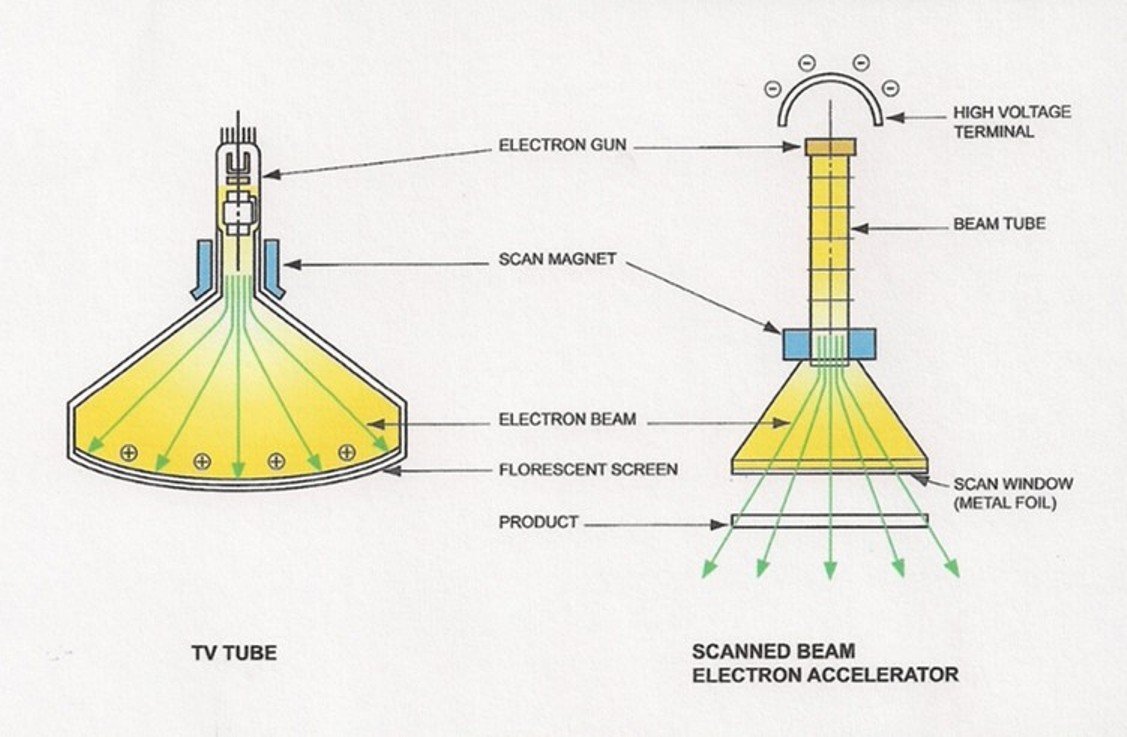An electron beam is a stream of electrons emitted from an electrode in a vacuum or gas. The beam may be generated by thermionic emission, photoemission, field emission, or other mechanisms. Electron beams are used in electron microscopes, X-ray tubes, linear accelerators and particle accelerators.
Beams of energetic electrons were first generated in the late 19th century by J.J. Thomson in his cathode ray tube experiments. In 1897, Eugen Goldstein observed canal rays—beams of ions produced when high voltage is applied to electrodes in gases—and realized that they were actually beams of electrons; he called them “cathode rays”. Cathode ray tubes (CRTs) employing electron beams were developed soon afterwards for use in television and oscilloscopes. X-ray tubes also make use of electron beams to generate X-rays; these were first used medically in 1896 with Wilhelm Röntgen’s discovery that X-rays could produce images of human bones and organs hidden beneath the skin.
Linear accelerators began being developed for research purposes in the 1930s; early ones used electromagnets to accelerate the particles while more recent designs employ microwave cavities or laser light pulses. Particle accelerators are much larger devices that use electric fields to accelerate charged particles to very high energies; these include not only circular accelerators such as the Large Hadron Collider but also linear ones such as the Stanford Linear Accelerator Center (SLAC). Electron beams are also used for industrial applications such as welding, curing materials and sterilizing food.
When an electron beam collides with a target material it can cause various effects depending on the energy of the electrons, the target material, and how the two interact. For example, low energy (<10 keV) thermal electrons simply heat up a material through collisions; at intermediate energies (~100 keV), non-thermal effects start becoming important as well and electrical breakdown can occur; finally at extremely high energies (>1 GeV), collisional ionization becomes important as well since individual nuclei can be stripped of their electrons (known as “delta rays”).


